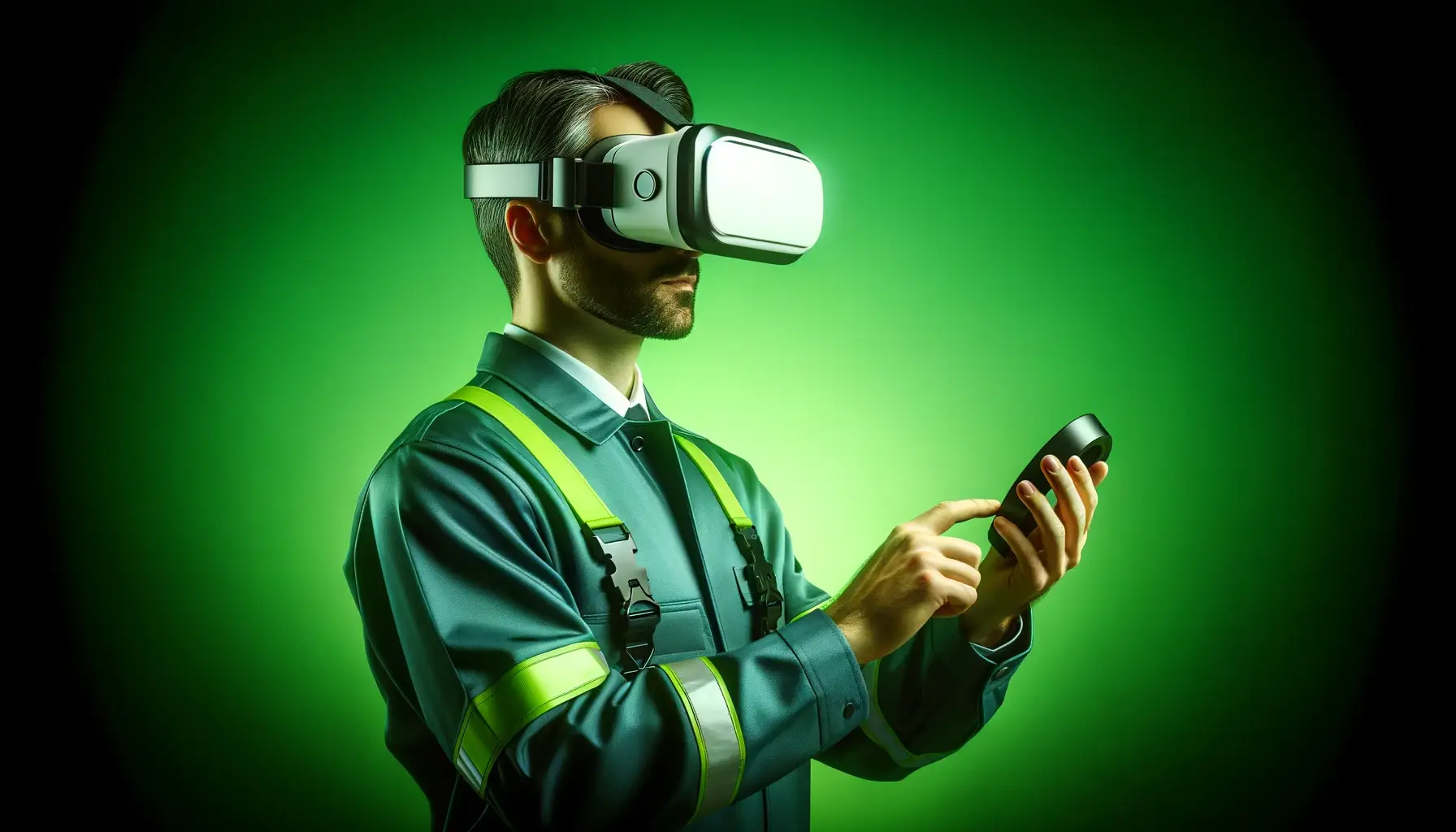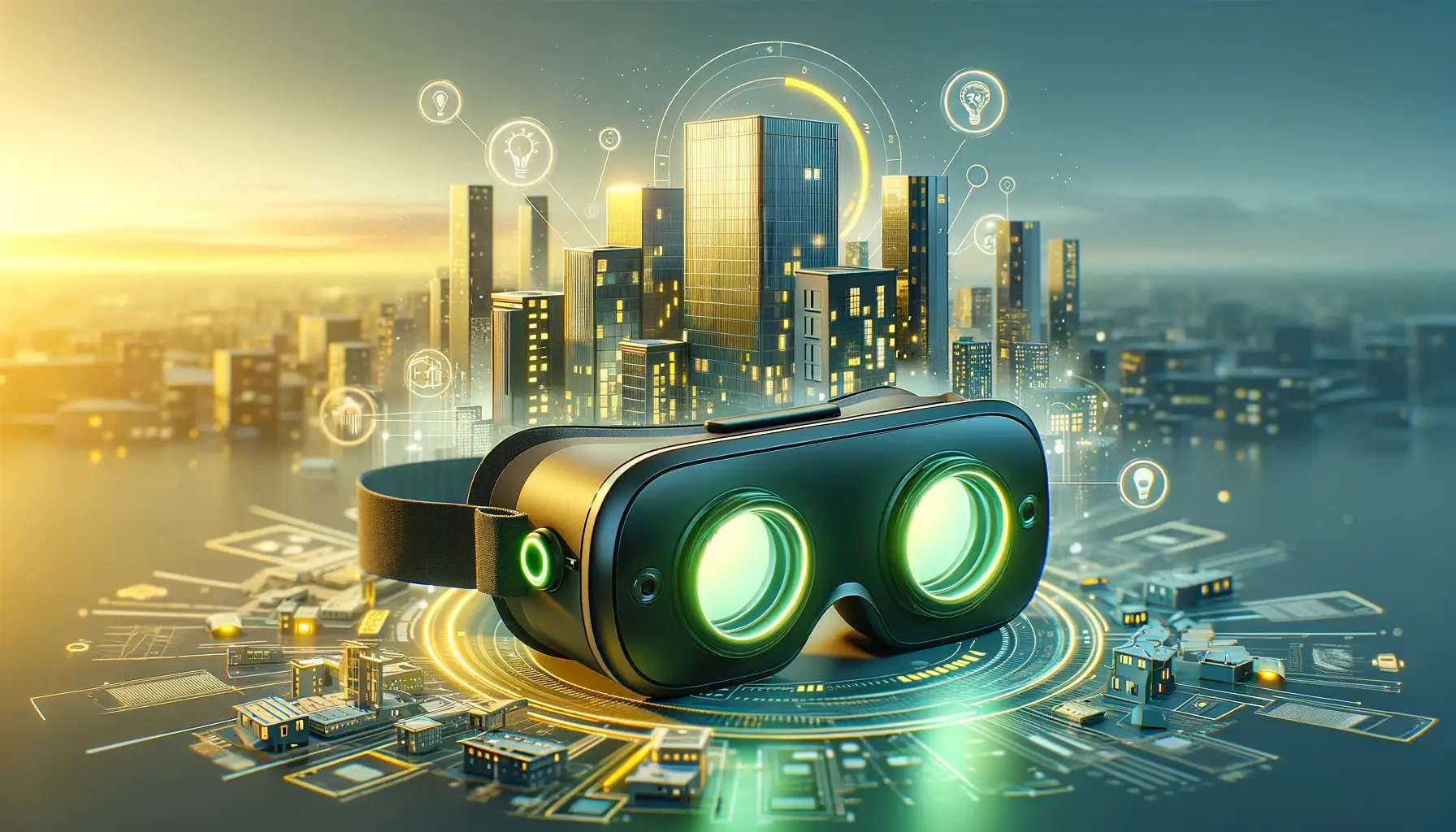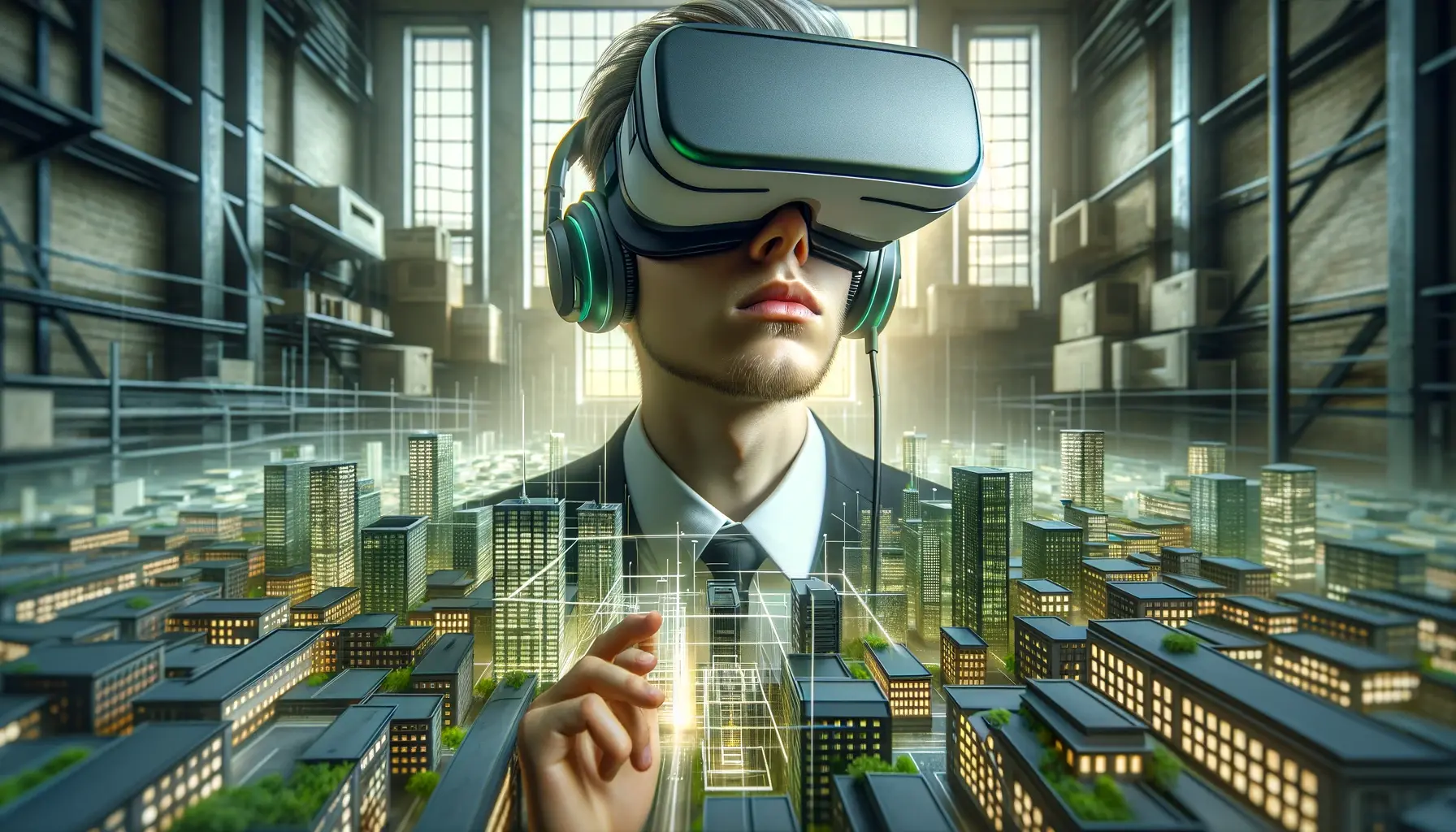The Future with Apple Vision Pro
Let’s talk about something that’s been creating waves in the tech world and has us at Sensgreen all accelerated up – the Apple Vision Pro. This awesome piece of tech showcases the incredible potential of Augmented Reality (AR) and Virtual Reality (VR) to merge our digital and physical systems in ways we’ve only dreamed of. Imagine walking through your building and seeing energy flows and consumption data popping up right before your eyes. Yes, that’s the kind of future we’re looking at!
Sam Altman, the big brain behind OpenAI, has named Vision Pro the most thrilling tech advancement since the iPhone. It’s a clear sign that AR/VR isn’t just for gamers or tech lovers anymore; it’s on the point of transforming industries, especially smart building management. From making buildings more energy-efficient to revolutionizing safety protocols, the potential is just waiting to be tapped. Here are some great examples:

Virtual Control Rooms for Energy Management
- With headsets’ spatial computing capabilities, facility managers can create virtual control rooms that offer a real-time and comprehensive overview of the energy consumption of a building. This immersive experience can assist in identifying areas of excessive energy use, visualizing the energy flow throughout the building, and making informed decisions to optimize energy efficiency.
- Intuitive gesture control for HVAC systems will be enabled. Even when the managers are away, they can adjust temperatures, switch systems on or off, and control energy use with simple hand gestures captured by the AR/VR headsets.
Immersive Training and Enhanced Safety Protocols with AR/VR Headsets
- Developing training programs that enhance the engagement and effectiveness of building staff in critical areas like safety and emergency response will be possible. It will offer lifelike simulations of challenging situations, allowing staff to navigate through emergencies in a risk-free, virtual setting. This innovative approach will significantly enhance retention and ensure that staff are thoroughly equipped for real-world incidents.
- Let’s consider the use case of fire evacuation drills. With AR/VR headsets, facility managers will be able to create detailed fire scenarios, complete with visual and audio cues, to guide staff through evacuation procedures without the logistical challenges of a live drill.
- Another exciting application will be in the maintenance of complex machinery. Technicians can use AR overlays to practice maintenance on virtual replicas of actual building systems, providing a hands-on experience that’s both safe and informative.
Optimizing Maintenance and Repair Operations
- The capabilities of the headsets will revolutionize how facility managers and maintenance teams handle maintenance and repair operations in smart buildings. By overlaying digital information onto the physical world, staff can quickly access a wealth of information about equipment, including operating instructions, maintenance history, real-time performance data, and predictive maintenance alerts. This can significantly reduce downtime and extend the lifespan of critical building infrastructure.
- Headsets will be used in diagnosing HVAC system issues. Technicians can use the device to visualize airflow patterns, temperature distributions, and potential blockages, allowing them to identify and rectify problems swiftly. This will be incredibly helpful in electrical maintenance, where electricians can use AR to safely identify live wires, load capacities, and circuit connections, reducing the risk of accidents and improving repair efficiency.
Elevating Interactive Building Navigation and Future Space Utilization
- AR/VR headsets are a revolutionary technology that will transform how visitors and occupants experience large buildings. It offers an unmatched interactive navigation system that enables users to follow virtual arrows or pathways projected in their field of view. This way, they can easily find their way to their desired locations without any hassle.
- Facility managers will be able to use VR technology to project future space utilization scenarios, allowing for detailed planning of building layouts. They will visualize how spaces can be adapted or reconfigured to optimize energy use in different building zones and maximize occupancy during events.
- One of the most promising uses for headsets will be improving accessibility for people with disabilities. It will provide personalized navigation aids, such as audio cues for the visually impaired or sign language avatars for the deaf, making buildings more inclusive and navigable for everyone.

In conclusion, we at Sensgreen are excited about the potential of AR/VR technologies like Apple Vision Pro to revolutionize smart building management. Our mission is to enhance built environments’ sustainability, efficiency, and well-being. We look forward to integrating these cutting-edge tools to optimize building operations and create immersive experiences for facility managers and occupants. Sensgreen is leading the way in shaping a healthier, more sustainable world with game-changing tools for smart buildings.


